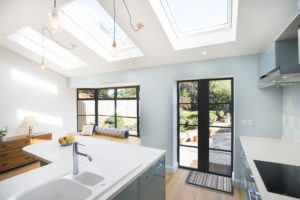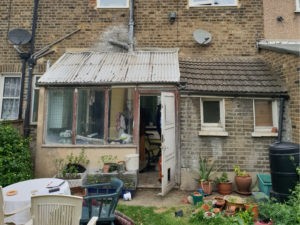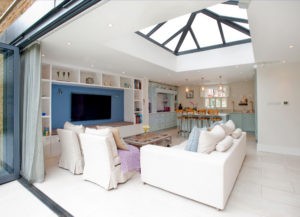Building a home extension can be a very exciting project with the potential to add significant value to your property. Some of the benefits include increasing living space, maximising natural light, improving energy efficiency and creating more storage, to name a few.
However, extending is also a complex process that requires careful planning, execution and expertise. To avoid costly and lengthy pitfalls, here are some of the common renovation mistakes to steer clear of when building your extension.
No Contingency Budget
One of the most frequent mistakes homeowners make is not setting aside a contingency budget to cover unexpected costs. Renovations rarely go exactly to plan, and unexpected costs can quickly arise—hidden structural issues, faulty wiring, unforeseen weather delays and rising material costs are just a few things that can go wrong when renovating. By not having a financial buffer (typically 10-15% of your overall budget), you risk delays or running out of funds before the project is complete.
To avoid this, always build a contingency into your budget to cover unforeseen expenses. This way, you’ll be prepared for any surprises without having to compromise on your extension’s quality or design. A financial safety net will also help you gauge a better understanding of your overall budget.
Forgetting the Bigger Picture
It’s easy to get caught up in the excitement of building an extension, focusing on creating additional space. However, forgetting to consider how the new extension will affect the rest of your home can lead to problems down the line. For instance, will your current heating, plumbing, and electrical systems be able to handle the demands of the new space? In many instances, it might be more energy efficient to upgrade your boiler if you are adding significant space.
Also, how will the extension impact the flow of your home or the amount of natural light in adjacent rooms? You’ll want to consider how the layout of your extension works with the layout of your home and factor in how you can increase natural light throughout your home, either through internal glazing or through an open-plan design.
When planning your extension, think holistically. Ensure that your existing infrastructure is adequate, and that the extension harmonises with the rest of the property, both aesthetically and functionally.
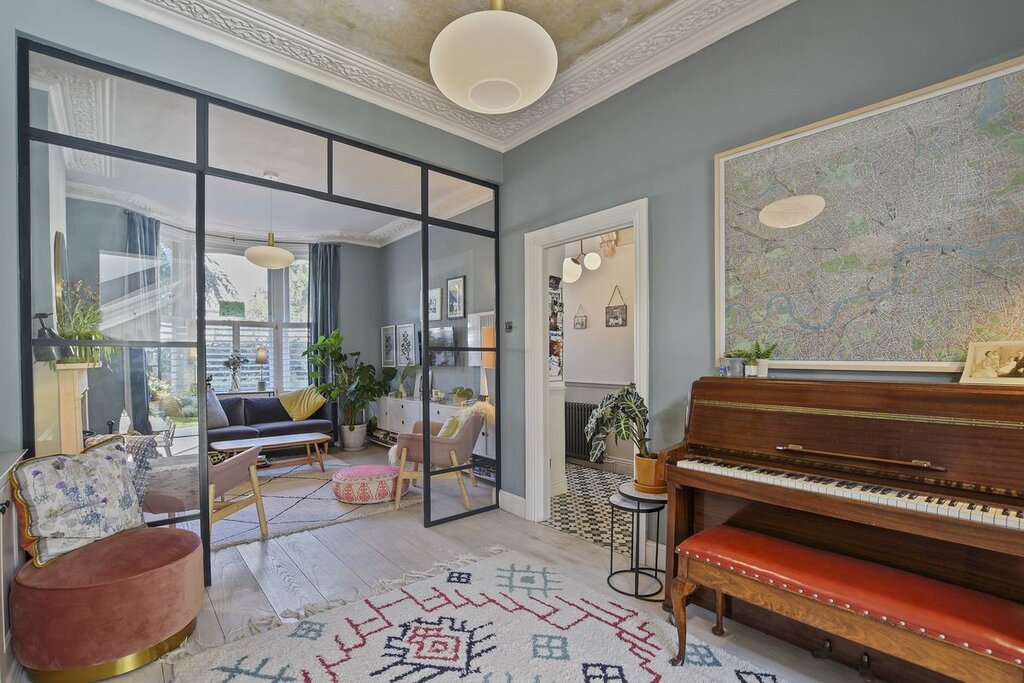
Choosing the Cheapest Quote or First Quote
It’s tempting to go with the cheapest quote, but this can often lead to poor quality workmanship, delays, or costly fixes down the road. Similarly, choosing the first contractor you meet without doing proper research could leave you stuck with someone who doesn’t fully understand your vision or has limited experience with your type of project.
Get at least three to five quotes from different contractors and thoroughly vet them. Ask for references, check their credentials, and look at their previous work to ensure they’re the right fit for your project. Remember, going with the cheapest option isn’t always the most cost-effective in the long run.
Also, it is crucial to get a comprehensive breakdown of your quote from your chosen contractor. This will provide clarity from the outset and reduce the likelihood of surprise costs down the line.
Forgetting Planning Permission
While not every extension requires planning permission, several do, and neglecting to check the requirements can lead to serious consequences, including hefty fines or being forced to tear down your extension. Even if you think your project falls under permitted development rights, it’s always wise to double-check with your local planning authority.
For extensions that do require permission, such as basement extensions, rear extensions and side extensions, ensure you submit your application well in advance and allow for any potential delays in receiving approval. Engaging a professional to handle the paperwork can also save time and reduce stress.
Not Thinking About Longevity in Design
Trendy designs can be tempting, but what’s fashionable today might look outdated in a few years. When building an extension, it’s important to think about the long-term use and appeal of the space. Will the design still meet your needs in 10 or 20 years? Will it add value to your home or deter potential buyers if you plan to sell? Is it future proof?
Consider timeless design features, durable materials, and flexible spaces that can adapt to your changing needs over time. Where possible, choose energy-efficient options that add value and reduce energy costs, as well as sustainable materials. A well-designed extension should not only enhance your current lifestyle but also stand the test of time, both in functionality and aesthetics.
Overlooking Energy Efficiency
Energy efficiency is a hugely important factor when building an extension, and one can have a significant impact on your property value. Poor insulation, single-glazed windows, or inefficient heating systems can lead to higher energy bills and a less comfortable home.
Incorporating energy-efficient materials and solutions into your extension design—such as double or triple glazing, solar panels, and high-quality insulation—will not only reduce your carbon footprint but also lower your energy costs in the long run. Consider consulting an energy specialist during the design phase to ensure your new space is as eco-friendly as possible.
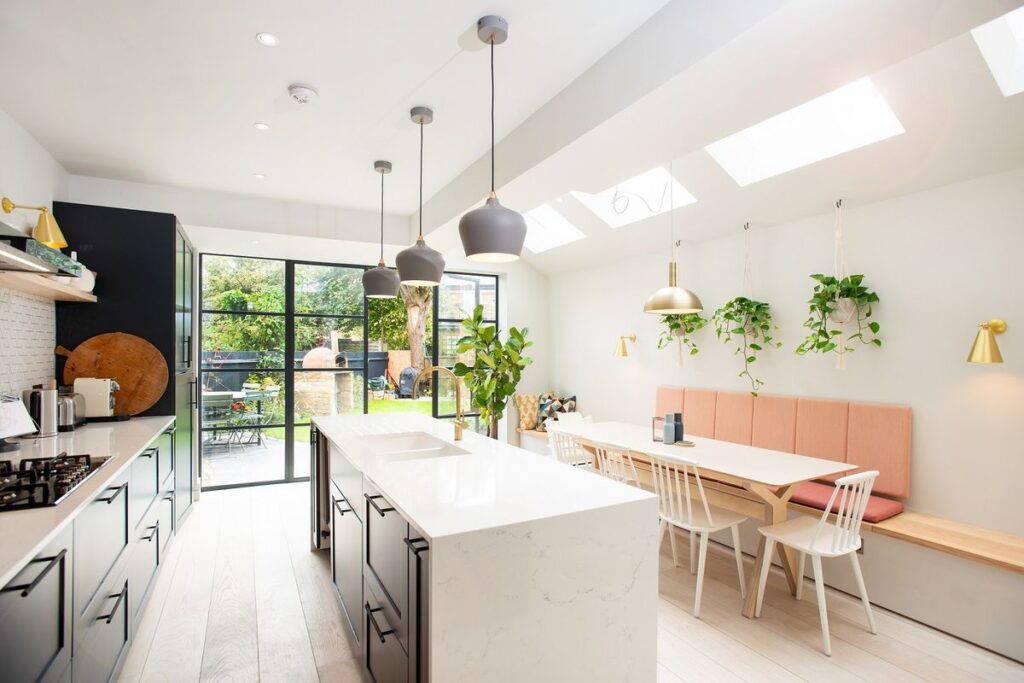
Ignoring the Importance of Lighting
Lighting is often an afterthought in extension projects, but it plays a crucial role in the overall feel and functionality of the space. Poorly lit extensions can feel dark and unwelcoming, while well-designed lighting can enhance the room’s aesthetic and make it more comfortable to use.
When planning your extension, consider both natural and artificial lighting. Maximise natural light with features like skylights, large windows, or bi-fold doors. For artificial lighting, think about layering different types—ambient, task, and accent lighting—to create a flexible and inviting space.
Underestimating Living on a Building Site
Renovations can be disruptive, especially if you’re living on-site while the extension is being built. Noise, dust, and limited access to parts of your home can make daily life stressful. Many homeowners underestimate just how challenging it can be to live through a major renovation, which can lead to frustration and tension.
If living on-site isn’t feasible, you might want to consider temporary accommodation. Alternatively, plan ahead to minimise disruption by creating designated living zones or working out a schedule with your contractor for quieter times during the build.
Building an extension can be an exciting opportunity to transform your home, but it’s essential to approach the project with care. By avoiding these common renovation mistakes and planning with both the present and future in mind, you can create a space that enhances your home’s value, functionality, and aesthetic appeal.



